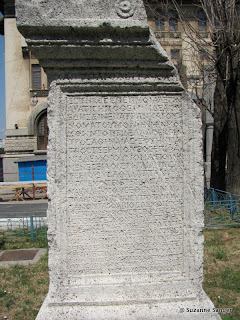It's been a LONG time since I posted anything here. I've been busy, I suppose, but I hope to continue now--and hope I remember enough details of the rest of our journey to do this!
We had docked in Ruse, Bulgaria before traveling to the places mentioned in the previous two posts, then returned to Ruse where we had time to walk around. Ruse is Bulgaria's largest river port, and the country's fifth largest city. It's a nice town with some charming architecture and very colorful buildings.
This is Holy Trinity Church, which is still in use with an active congregation.
The main square is home to a beautiful opera house...
...and surrounded by buildings painted in wonderfully exuberant colors.
As we strolled back to our boat, we discovered that not everything is as well maintained as the previous buildings, but also that the use of pretty colors must be traditional, because even when the paint is peeling, they are visible.
This contemporary home overlooks the Danube and continues the tradition in a much more modern way.
Here is our boat, Vantage's River Odyssey.
Back on board that evening, we enjoyed another excellent dinner. We had an interesting conversation with our server, who was Bulgarian. He said he hoped we would one day return--but that when we did, the area might be all Bulgaria, or all Romania. When I asked how that could be, he predicted more wars in their future--because "We love to fight!" He was so cheerful about it that I was truly aghast to realize that decades or centuries of war have apparently taught nothing about the advantages of peace.





















































